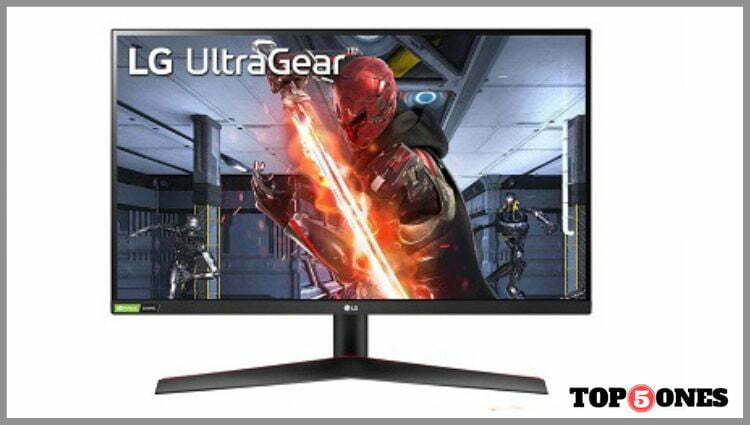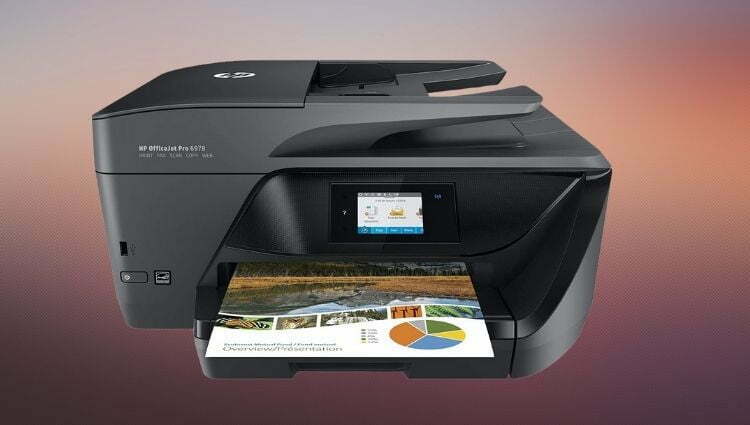We’ve put together a list of the top 8 best laptops for architecture students to help you make an informed choice. These laptops are also great for architects and designers who want to work professionally.
A standard laptop won’t cut it as the best laptop for architects. In order to do their jobs, architects must make use of several, resource-heavy design programs. AutoCAD, 3DS Max, and SketchUp are just some of the programs they need to be able to run simultaneously, and they also need adequate space to save their work in case of an emergency. As architects spend a lot of time on the fly, their powerful laptops also need long lasting batteries.
We have compiled a list of laptops suitable for an architect based on our extensive testing and expert assessments. Over several days or weeks, we put each of these laptops through rigorous testing, during which we evaluated its performance, features, screen quality, and value in order to determine which ones would be the best for architects with varying needs. Check out our in-depth analysis of the laptop testing procedure.
Whether you’re a seasoned professional, a student just starting out in architecture, or a DIY home improvement enthusiast, you’ll be happy to know that a wide variety of laptops are now available with this potent yet portable combo. If you’re searching for a more affordable choice that still delivers enough of power, you can join the many architects utilizing the best laptops for gaming, which you may find in our guide to the most powerful laptops.
Check out our recommendations for the best laptops for sketching and the best laptops for animation if you’re interested in experimenting with other transferrable talents that might benefit your architecture practice. If you’re an architect or designer who spends a lot of time at a computer, check out our guide to the finest office chairs.
Table of Contents
ToggleBest Laptops for Architecture Students
MacBook Pro 16-inch
Our ratings
- CPU: Apple M1 Pro 10-core – M1 Max 10-core
- Graphics: Integrated 16-core – 32-core GPU
- RAM: Up to 64GBn
- Screen: 16.2-inch Liquid Retina XDR display
- Storage: Up to 8TB
Editor’s choice!
Dell XPS 17
Our ratings
- CPU: Up to 11th Generation Intel Core i9-11980HK
- Graphics: Up to NVIDIA GeForce RTX 3060 6GB GDDR6
- RAM: Up to 64GB DDR4-3200MHz
- Screen: 17.0" FHD+ (1920 x 1200) InfinityEdge Non-Touch Anti-Glare 500-Nit – 17.0" UHD+ (3840 x 2400) InfinityEdge Touch Anti-Reflective 500-Nit
- Storage: Up to 4TB M.2 PCIe NVMe
Microsoft Surface Laptop Studio
Our ratings
- CPU: Up to Quad-core 11th Gen Intel Core H35 i7-11370H
- Graphics: Intel Iris Xe or NVIDIA GeForce RTX 3050
- RAM: 16GB or 32GB
- Screen: 14.4in 2400 x 1600p 3:2 PixelSense Flow touchscreen
- Storage: 256GB – 2TB
MacBook Pro 14-inch
Our ratings
- CPU: Apple M1 Pro 8-core – M1 Max 10-core
- Graphics: Integrated 14-core – 32-core GPU
- RAM: Up to 64GB
- Screen: 14-inch Liquid Retina XDR displa
- Storage: Up to 8TB
–
Acer ConceptD 7 Ezel
Our ratings
- CPU: 10th-generation Intel Core i7
- Graphics: NVIDIA GeForce RTX 2060 – 2080
- RAM: 16GB – 32GB
- Screen: 15.6in 4K UHD (3840 x 2160) 16:9 IPS
- Storage: Up to 2TB
–
Apple MacBook Air (M1, 2020)
Our ratings
- CPU: Apple M1
- Graphics: Integrated 7-core /8-core GPU
- RAM: 8GB – 16GB
- Screen: 13.3-inch (diagonal) 2,560 x 1,600 LED-backlit display with IPS technology
- Storage: 256GB – 2TB SSD
- Dimensions: 11.97 x 8.36 x 0.63 inches
–
MacBook Pro 13-inch (M1, 2020)
Our ratings
- CPU: Apple M1 chip with 8‑core CPU
- Graphics: Integrated 8-core GPU
- RAM: 8GB – 16GB unified memory
- Screen: 13.3-inch 2560 x 1600 LED-backlit Retina display
- Storage: 256GB – 2TB SSD
- Dimensions (H x W x D): 30.41 x 21.24 x 1.56 cm
–
LG Gram 17 (2021)
Our ratings
- CPU: 11th-generation Intel Core i7
- Graphics: Intel Iris Xe Graphics
- RAM: 16GB LPDDR4X
- Screen: 17-inch WQXGA (2560 x 1600) IPS LCD
- Storage: up to 2TB NVMe SSD
–
Best Laptops for Architects in 2023 Review
These are the 8 best laptops for architecture students , and we review them in depth:
MacBook Pro 16-inch (2021): Premium Laptop
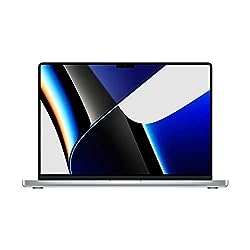
The most effective top laptop for architects, in our opinion, is the most recent 16-inch MacBook Pro (2021). Because users may choose between the M1 Pro or M1 Max CPUs, both of which are extremely quick and provide exceptional performance while working with demanding architectural software, this MacBook is the most powerful one yet. Moreover, you can very much increase the starter configuration as much as you might possibly require, with up to 64GB of RAM and 8TB of storage, if your needs are really high.
The 16-inch Liquid Retina XDR display is the greatest laptop screen we’ve ever seen, and it provides a ton of workspace. Nevertheless, the most recent MacBook Pro also has more connectors than earlier models, including Thunderbolt 4 ports and a full-size HDMI port. Although it is pricey, you receive a beautiful laptop that will last you for many years. Of course, since it’s an Apple laptop, it looks perfect for client meetings.
What we like
- Super long battery life.
- Lots of ports.
What we don't like
- Expensive to buy.
2. Dell XPS 17 (2021): Best Dell Laptop For Architects
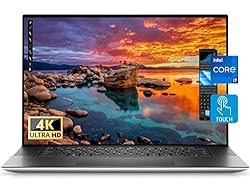
With its 2-in-1 design, the Surface Laptop Studio is a very handy Windows notebook, but many architects would prefer a screen larger than 14.4 inches for their workspace. The Dell XPS 17 enters the scene, a 17-inch laptop that is surprisingly portable. When we examined the XPS 17, we were astounded at how small it is for a 17-inch laptop. Laptops of this size often bulk up and are difficult to carry around. It isn’t too hefty though; the base model weighs 2.21kg, which is just a little more than the MacBook Pro 16.
This enables you to travel with it while still enjoying a considerably bigger screen for productive use. Power-wise, any rendering program you use should work without a hitch with configurations up to an Intel Core i9 CPU, 64GB of memory, and an Nvidia RTX 3060 GPU.
What we like
- Excellent performance.
- Stunningly beautiful design.
What we don't like
- Not enough ports.
3. Microsoft Surface Laptop Studio: Best Budget for Architects
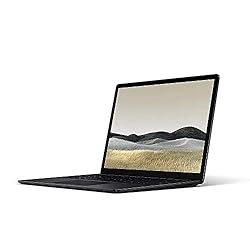
The Surface Laptop Studio is a great option if you adore the notion of a MacBook but prefer Windows over macOS. It threatens Apple’s dominance with a stunning design and high-end construction. Windows 11 works well, and using the touchscreen with PixelSense is a delight.
The laptop’s useful 2-in-1 form factor, which lets you slide the screen forward into an easel-like position or completely flat over the keyboard, effectively transforms it into a large tablet with a touch screen that can be used with a stylus, which can be a game-changer for design work, sketching, and taking notes.
The battery life is amazing, and the keyboard is quite pleasant to use. Overall, it demonstrates that there are other options available if you want a sleek, fashionable, and powerful laptop for working. In reality, Windows substitutes may now provide a variety of form factors, giving them an advantage for many consumers.
What we like
- Useful two-in-one form.
- Convenient keyboard.
- Lovely screen.
What we don't like
- Costly.
4. MacBook Pro 14-inch (2021): Best Smaller Laptop for Architects
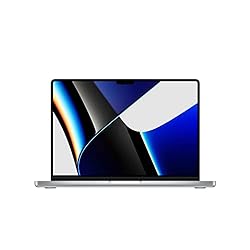
A new MacBook size, the 14-inch MacBook Pro (2021), fills the space between the little, too-small 13-inch MacBook Pro and the bigger 16-inch variant. We discovered that it provides a good balance between screen size and mobility and has practically identical characteristics as the 16-inch gadget at the top of our list.
The P3’s broad color gamut and 1,600 nits of maximum brightness are supported by the mini-LED screen, which seems just as spectacular as its bigger counterpart. With the 16-inch model, you may choose between the Apple M1 Pro and M1 Max chips. Many architects will prefer having the bigger screen, which is why this is lower on our list. Nevertheless, if a 14-inch screen is large enough for you to work on or if you’ll be connecting to an external monitor anyhow, this is a fantastic purchase because it’s also a bit cheaper.
What we like
- Excellent performance.
- The laptop has the best screen.
What we don't like
- Some people might find the screen a bit small.
5. Acer ConceptD 7 Ezel: Best Stunning Laptop
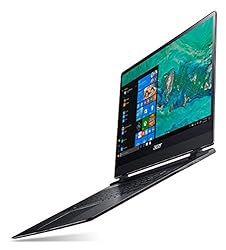
The Acer ConceptD 7 Ezel Pro would be a terrific laptop for architects who have a large budget and want one of the most powerful Windows laptops money can buy. It also has one of the most beautiful panels, a Pantone-validated 4K IPS display that we discovered gives incredibly accurate color reproduction.
Like the Surface Laptop Studio before it, this laptop also boasts a flexible hinged design that enables you to use it as a conventional laptop, an easel, or flat like a tablet. Also, it features some very potent technology hidden behind a very fashionable all-white chassis. It can be set up with a variety of potent Intel CPUs, Nvidia graphics cards, and up to 32GB of memory, making 3D mockups and animation a breeze. Another Windows laptop that challenges Apple’s design expertise, it sticks out amid the countless gray and black computers on the market.
What we like
- Quite powerful.
- Pantone 4K IPS display.
- Stunning looks.
What we don't like
- Very pricey.
6. Apple MacBook Air (M1, 2020: Best Laptops for Architects and Designers
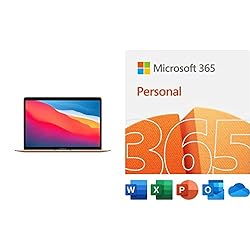
The MacBook Air (M1, 2020) is our pick for the best laptop for architecture students and professionals since it is a less expensive alternative to the incredibly pricey MacBook Pro above. Now that the updated 2022 MacBook has been released, you can often acquire one for approximately $900 or £900 if you wait for a deal, which is happening more frequently. Although it may not be as powerful as the laptop at the top of our list of the best laptops for architects, it still provides adequate performance for the majority of architects’ demands, even though it could have trouble with really sophisticated 3D rendering.
If you frequently need to carry a laptop with you, it is a useful alternative because it is also incredibly tiny and compact. Good battery life is also helpful here.
For all the information, see our comprehensive MacBook Air (M1, 2020) review.
What we like
- Easy to use without making noise.
- The battery life is amazing.
- A MacBook at a good price.
What we don't like
- No new look.
- A design without a fan can hurt performance.
7. MacBook Pro 13-inch (M1, 2020): Best Budget Laptops for Architects
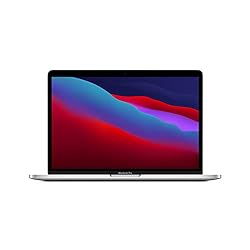
The MacBook Pro 13-inch model is a fantastic option for architecture students or those on a slightly tighter budget looking for something that can run every piece of software you need but won’t break the bank. If you want a MacBook Pro but the 16-inch and 14-inch models above are too large and expensive, then the MacBook Pro 13-inch model is well worth considering.
Despite its age, the MacBook Pro 13-inch (M1, 2020) offers some very outstanding performance because it uses Apple’s own M1 CPU (rather than an Intel processor).
Therefore, even demanding applications will function flawlessly on this little laptop. The MacBook Pro 13-inch (M1, 2020) is the best option for architects looking for a 13-inch laptop they can depend on, even while they are on the go, because it has excellent battery life (as do all current MacBooks). The 13-inch MacBook Pro is a wonderful option if you’re on a tighter budget, even if the newest models have greater power, especially since its price is frequently reduced during specials.
What we like
- Long-lasting battery.
- Excellent work.
What we don't like
- Ports are still lacking.
8. LG Gram 17 (2021)
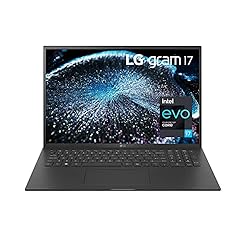
The LG Gram 17 is another excellent large-screen laptop for architects who want enough workspace but don’t want to connect an external monitor, similar to the Dell XPS 17 mentioned above. It weighs just 1.35kg, which is astonishing for a 17-inch laptop and is even lighter than the Dell laptop.
Other than that, everything is accurate and has enough power for architectural software. As it lacks a dedicated graphics card, it won’t be the ideal choice for rendering huge 3D models, but it will be more than adequate for the majority of workloads. It has a clever and appealing design, and the battery life is also quite good.
What we like
- The battery life is great.
- A big, high-quality screen.
What we don't like
- Expensive.
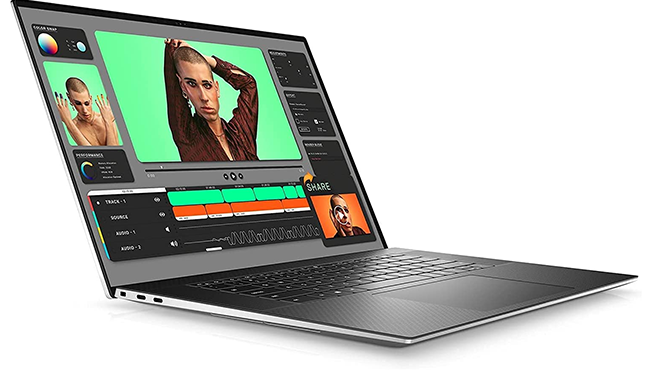
How to Choose the Best Laptop for Architecture Students
Are you a designer or architect seeking a laptop with the processing power to perform demanding 3D rendering? Look nowhere else. In this post, we’ll outline the factors that architects and other design professionals should take into account while selecting a laptop.
You can pick the best laptop for your needs by being aware of the qualities a great laptop should have and what an architect requires. We’ll go through how to pick a laptop that can handle demanding 3D rendering and other duties required by architects.
The best option for architects who require a laptop for usage at work or on the go will also be covered. You’ll be able to choose the ideal laptop for your requirements with the information provided here.
1. Performance
- RAM
You should take the type of RAM the laptop has installed into account while selecting the best laptop for your architectural demands. RAM, or random access memory, is a kind of memory that temporarily stores data while a computer is operating.
Your laptop will be able to tackle more difficult activities, including rendering 3D models and running numerous apps simultaneously, if it has more memory. A minimum of 16 GB of RAM is advised for architects who intend to utilize their laptops for demanding activities like producing 3D models or running virtual reality applications.
- Processor
Your laptop’s CPU is its “brain,” and it has a big impact on how well it performs. An Intel Core i7 or i9 CPU is normally found in a high-end laptop, whereas an Intel Core i5 or AMD Ryzen 5 processor is typically found in a regular laptop.
Get a laptop with an Intel Core i7 or i9 CPU if you need it to tackle demanding activities like rendering 3D models or running virtual reality applications.
The processor’s clock speed should also be taken into account because quicker performance is achieved at higher clock rates.
- Storage
Another crucial aspect to take into account when selecting a laptop for your architectural demands is storage capacity. You should get a laptop with at least 1 TB of storage if you want to save huge files like 3D models or CAD drawings on it.
Also, you should think about purchasing an external hard drive if you want to be able to store even more data.
2. Display and Graphics
- Resolution
How successfully your laptop can execute challenging activities like 3D rendering and virtual reality software depends in large part on the quality of its display. Different sized laptops normally have lesser resolutions than bigger 17-inch computers, while smaller laptops frequently have greater resolutions.
Architects should choose a 17-inch laptop with at least Full HD (1920 x 1080) resolution if they want to use their laptop for demanding activities like processing 3D models or running virtual reality applications.
- Accurate Color
Another crucial aspect to think about while selecting a laptop for your architectural needs is color fidelity. Having a display with outstanding color accuracy is crucial since architects frequently deal with intricate renderings that need precise colors.
If you want your renderings and designs to appear their best on your laptop’s display, choose one with good color accuracy and 100% sRGB coverage.
- Battery’s life
When selecting a laptop for your architectural needs, battery life is also a crucial aspect to take into account. If you plan to work on rendering projects or other hard jobs without access to a power outlet, having a strong battery life is crucial.
Look for laptops with at least 8 hours of battery life on a single charge if you want your computer to survive longer while working on these projects.
Consider purchasing a gaming laptop if you want to use your laptop for gaming because they often have longer battery lives than regular laptops.
3. Connectivity of ports
Having the appropriate ports and connectivity choices is one of the most crucial considerations when picking the best laptop for architects. The majority of laptops will at the very least have wireless networking, an HDMI connector, and a USB-C port.
But, based on your requirements, you could also want an SD card reader or a Thunderbolt 3 connector. Before making a purchase, it’s crucial to verify the accessible ports on any laptop you’re thinking about.
4. Software and Operating System Compatibility
Making sure the laptop is compatible with the design software used by architects is a crucial consideration when looking for the best laptop for architecture students or professionals.
You should confirm that any software you intend to use is compatible with the operating system of the laptop you have chosen because most laptops either run Windows or Mac operating systems.
Also, you should make sure your laptop is capable of handling demanding 3D rendering or virtual reality applications if your job requires it.
5. General Efficiency
Furthermore, you should make sure the laptop you choose has the power to meet all of your design requirements while searching for the best laptop for architects.
Architects working on complicated projects will want a laptop that can run demanding software and switch between programs while doing so. Also, you should seek for a laptop with a long battery life and the ability to manage heavy tasks.
6. Weight and Portability
Weight and mobility are two of the most crucial factors to take into account when selecting a laptop for architects. For architects who must transport their laptops from job to job, weight is a crucial consideration.
For architects who must easily travel from one location to another, a lightweight laptop is excellent. The length of time you can use your laptop before it has to be recharged is something else you should consider.
Making sure the laptop you select is tiny enough to fit in your suitcase or backpack without taking up too much room is also essential.
6. Durability
Be sure the laptop you purchase can withstand the demands of working on the fly when it comes to durability issues. Finding a laptop with a sturdy chassis and shock-absorbent construction is essential because architects’ laptops could experience knocks, drops, and even the rare spill.
Look for laptops with ports that are sealed against dust and water damage and spill-resistant keyboards. This will guarantee that your laptop can resist any situation without compromising its performance or durability.
7. Design: Touchpad Quality and Keyboard Layout
While choosing a laptop for architects, you should also take the keyboard layout and touchpad quality into account. Look for a laptop with a keyboard layout that is both comfortable and natural, allowing you to type effectively and fast.
Make sure your laptop’s touchpad has precise tracking and sensitivity if you intend to use it for sketching or drawing so that you can precisely produce your creations.
In order to effortlessly manage your cursor motions while working, ensure sure the touchpad’s size fits properly in your hand.
Laptops for Architecture Students FAQs
Q. How do I choose the best laptop for architects? What should I look for?
The most important thing about laptops for architects and architecture students is that they have a lot of computing power. Some of the software that architects use every day can be very demanding, so you’ll need a modern laptop with a multi-core processor and a graphics card. To be safe, you should have at least 16 GB of RAM, but you could get by with 8 GB if you had to.
The size of the screen is also important so that your eyes don’t get tired and so that you and your clients can see your work easily. It’s also important to think about the peripherals you might want to use. If you often give presentations, you’ll need an HDMI port to connect an external monitor and enough USB ports for a mouse, a touch pad, and external hard drives.
Q. Is it better to study architecture on a laptop or a PC?
As an architect, you’ll be on the go a lot, whether it’s to visit a client or check on a project that’s already in progress. Students will also want to move between labs, classes, and homes, so it goes without saying that laptops are the most portable option.
Q. Are laptops for gaming a good choice for architects?
Architects are more and more likely to use gaming laptops, mostly because they are cheaper and still have the computing power they need. Most gaming laptops can easily compete with some of the best laptops for architects, and if you can get past the sometimes bright RGB lighting, they are a great alternative.
Q. Do architects need laptops with touch screens?
As an architect, you don’t need a touch-screen laptop, but it can be nice to have one. Even though it can make the price go up a little, having a touch screen and a stylus can make all the difference when it comes to design and taking notes.
Q. Mac or Windows? What do architects like?
Most creative people prefer Apple products over Windows, but Apple has always had a much smaller library of supported software, which hurt some architecture programs. Now, Mac has a lot more architecture software than it used to, but it still doesn’t have all of the most popular programs like Revit and Microstation. Plus, since this software needs a lot of processing power, you’d spend a lot more on a MacBook than on a Windows laptop.
Laptops for Architecture Students Final Thoughts
We really hope you have enjoyed reading this comprehensive guide as much as we have. The pricing and performance of each model are used to classify them in our guide. Also, before making a purchase, we advise consulting the buyer’s guide and FAQs.
We’d like to mention a few of our top laptops for designers and architects from the list before we say goodbye. The MacBook Pro 16-inch (2021) takes first place thanks to its fast Processor, effective 3D renderings, and wide range of programs.
The Surface Laptop Studio, which features a powerful NVIDIA graphics card and a high-resolution screen, is another option if you are on budget.






